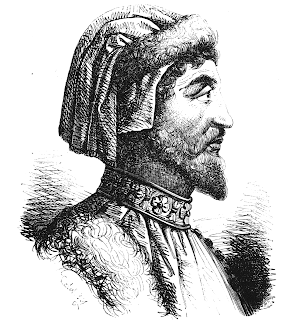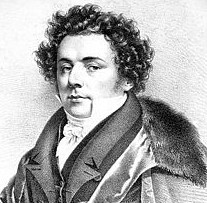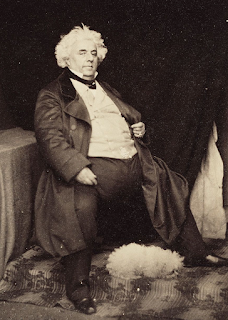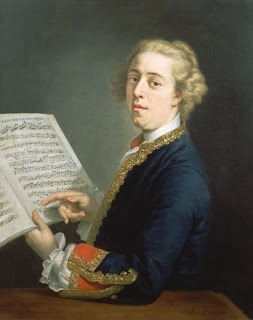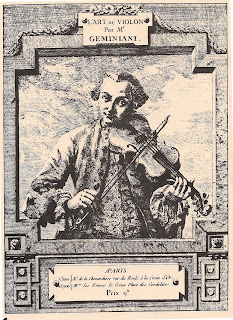Emigrant to Germany who invented Eau de Cologne
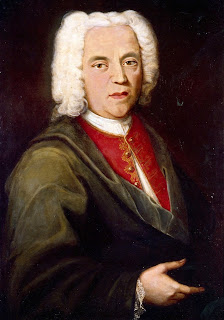 |
| Johann Maria Farina gave his new fragrance the name Eau de Cologne |
Johann Maria Farina, the Italian perfumier said to have created the
world’s first Eau de Cologne, was born on this day in 1685 in the small town of
Santa Maria Maggiore in Piedmont.
Farina’s family were masters in the art of distilling alcohol
to carry fragrances, which involves different techniques to those used to
distil alcohol to drink.
The method was developed in northern Africa, exported to
Sicily and then on to the Italian mainland.
Farina’s antecedents brought it with them to Piedmont, where his
grandmother established the family workshop in Santa Maria Maggiore, which is
located about 130km (81 miles) northeast of Turin, not far from the border with
Switzerland.
In his early 20s, Farina emigrated to Germany. Taking the
name Johann Maria Farina - his given Italian name was Giovanni - he initially worked for an uncle who had moved to
Cologne (Köln) some years earlier.
Feeling homesick, Farina began to dabble in experiments
using the distilling techniques he had inherited.
One day in 1708 he excitedly wrote a letter to his brother, Giovanni Battista Farina, exclaiming that he had produced a scent so pleasing to his nostrils
that it was almost dreamlike in its qualities.
He wrote: “I have made a perfume reminiscent of an Italian
spring morning, accompanied by a gentle freshness, where the scents of wild
narcissus combine with sweet orange blossoms. The fragrance is refreshing and
stimulative for my senses and imagination.”
 |
| Giovanni Paolo Feminis asked Farina to market his Aqua Mirabilis |
There have been suggestions that the recipe was not actually
his but belonged to another product, Aqua Mirabilis, a medicinal mix that was
the creation of Giovanni Paolo Feminis, a friend of the Farina family from Santa
Maria Maggiore, which Farina had offered to market in Cologne.
Whatever the true story – and it is possible Farina used his
distilling skills to give the formula his own twist - Farina was taken with the
fragrance and gave it the name “Eau de Cologne” in honour of his adopted city.
In the summer of 1709, Giovanni Battista Farina arrived in Cologne,
registered as a new resident at Cologne town hall, under the name of Johann
Baptist Farina, and in August 1 of the same year signed a 12-year contract to
rent a building opposite the Julichplatz in the street now known as Unter
Goldschmeid.
With his brother-in-law, Franz Balthasar Borgnis, he founded
Farina & Compagnie, which evolved into Gebrüder Farina & Compagnie - Farina
Brothers and Co – after Johann Maria and another brother, Carlo Girolamo,
joined the board.
The company is still operating more than 300 years later, from
the same premises at the corner of Obenmarspforten, with the red tulip logo
that was adopted at the very start. It
is the world’s oldest perfume factory. The current owners are the eighth generation
of Giovanni’s family.
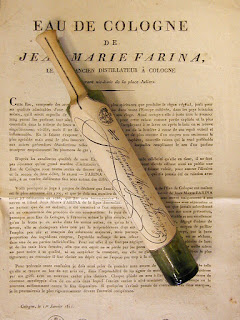 |
| The perfume was originally sold in long, slender bottles called rosali |
The business initially sold a wide range of luxury items,
such as lace, handkerchiefs, silk stockings, wigs, feathers, tobacco boxes,
sealing wax and face powder. After some
wobbles at the start, resulting in the departures of Carlo Girolamo and
Giovanni Battista’s brother-in-law and a renaming of the company to Fratelli
Farina (Farina Brothers), business began to grow.
It was after the death of Giovanni Battista in 1924 that Johann Maria’s perfume became its focus.
In those days, when personal hygiene standards were a long
way removed from those of today, it was normal for women and men to douse themselves
liberally in scent and, once word of it spread, Farina’s fragrance became a
sensation.
The exact recipe was a closely-guarded secret, naturally, and
remains so. It contained a blend of the oils of many citrus fruits and flower
essences, but most noticeable was the scent of Bergamot, the exotic citrus the
size and shape of an orange with the colour of lime, grown in particular areas
of southern Italy, Turkey and southern France.
The company was renamed again, this time simply as Johann
Maria Farina, which has remained unchanged since.
From a small start – the first delivery of Eau de Cologne
was for just 12 bottles in 1716 – Farina’s list of customers expanded rapidly. Between
1730 and 1739, around 3,700 of its distinctive long, slender bottles – named rosali
- were delivered.
 |
| The company's Eau di Cologne - Acqua di Colonia - as packaged today |
Vitally, the fragrance soon became a royal and imperial
favourite. Frederick William I of
Prussia, Clemens August of Bavaria, Holy Roman
Emperor Charles VI, Maria Theresa of Austria and Louis XV of France were all
taken with the unique scent and by 1740 it was being sold in cities all over
Europe.
It was the favoured perfume of royal families through the 18th,
19th and 20th centuries. Diana, Princess of Wales, enjoyed
its delicate notes and deliveries were regularly made to her home in London.
Other fans over the centuries included the composers Mozart
and Beethoven, British prime minister Benjamin Disraeli, the writers Mark Twain
and Oscar Wilde, the Indian prime minister Indira Gandi and the actresses
Marlene Dietrich and Romy Schneider.
Other manufacturers attempted to copy Farina’s formula, some
with greater success than others. The
most famous imitation is undoubtedly 4711, named after its location at
Glockengasse No. 4711.
The French fragrance manufacturer Roger & Gallet produces
a fragrance called Johann Maria Farina, having bought the rights to Eau de
Cologne extra vieille when Jean Marie Joseph Farina, a grand grand nephew of
Johann, sold the company’s Paris store in 1806.
Johann Maria Farina died in Cologne in 1766.
 |
| A wall plaque identifies Farina's birthplace in Santa Maria Maggiore |
Travel tip:
Visitors to Santa Maria Maggiore, a small town of around 1,200
residents 25km (16 miles) north of Verbania, can look round the Casa del Profumo
in Piazza Risorgimento, a new museum set up to celebrate the lives of both Giovanni
Paolo Feminis and Johann Maria Farina. The museum has developed a relationship
with the perfume museum at the original Farina headquarters in Cologne.
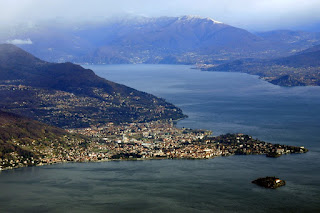 |
| Verbania is the largest town on Lake Maggiore |
Travel tip:
Verbania is the largest town on Lake Maggiore, with a
population of a little more than 30,000.
It was formed in 1939 by the merger of three smaller towns – Intra,
Pallanza and Suna. Pallanza, the middle
of the three, has a pretty harbour. Attractions include the Villa Taranto,
which has a magnificent botanical garden, and the Isolino di San Giovanni, a
small islet separated from the mainland by a stretch of water no more than 15
metres wide, which was for many years the home of the great conductor and
musical director, Arturo Toscanini.
